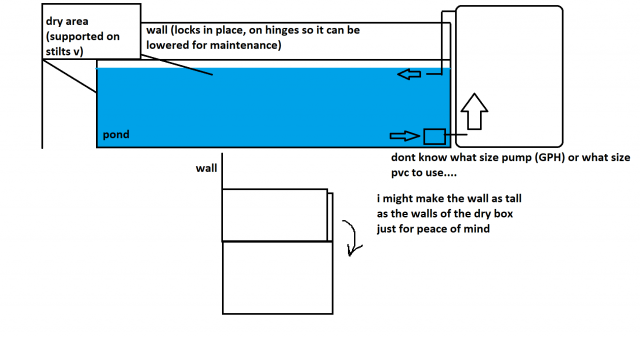So, I don't have the room for a 300 gallon Rubbermaid stock tank just because it's very "round" - I have 4 red-eared sliders and 1 painted turtle that desperately need an upgrade. I planned on building what is basically a plywood aquarium without the front panel so I don't need to worry about silicone. It's going to have a wooden frame on the outside and plywood on the inside.
I don't know how to build this, because the tutorials are all for aquariums specifically, with the front viewing panels. I'd like some advice with a couple hangups I may have. This is the planned measurements in inches and US gallons:
Length: 96"
Height: 24"
Depth (front to back): 36"
~359.1 US gallons
The things I'd like to ask about:
- Are there wood stains / sealants that are waterproof and safe for turtles? For the wood on the outside.
- Is Liquid Rubber NeoPond any good? I don't want to use a pond liner if I don't have to, they're very crinkly and ugly.
- Should I build a DIY filter? I've been eyeing a 32 gallon brute trash can. If there's a NON-VIDEO tutorial on building one of these filters I'd like to know.
I don't know how to build this, because the tutorials are all for aquariums specifically, with the front viewing panels. I'd like some advice with a couple hangups I may have. This is the planned measurements in inches and US gallons:
Length: 96"
Height: 24"
Depth (front to back): 36"
~359.1 US gallons
The things I'd like to ask about:
- Are there wood stains / sealants that are waterproof and safe for turtles? For the wood on the outside.
- Is Liquid Rubber NeoPond any good? I don't want to use a pond liner if I don't have to, they're very crinkly and ugly.
- Should I build a DIY filter? I've been eyeing a 32 gallon brute trash can. If there's a NON-VIDEO tutorial on building one of these filters I'd like to know.



